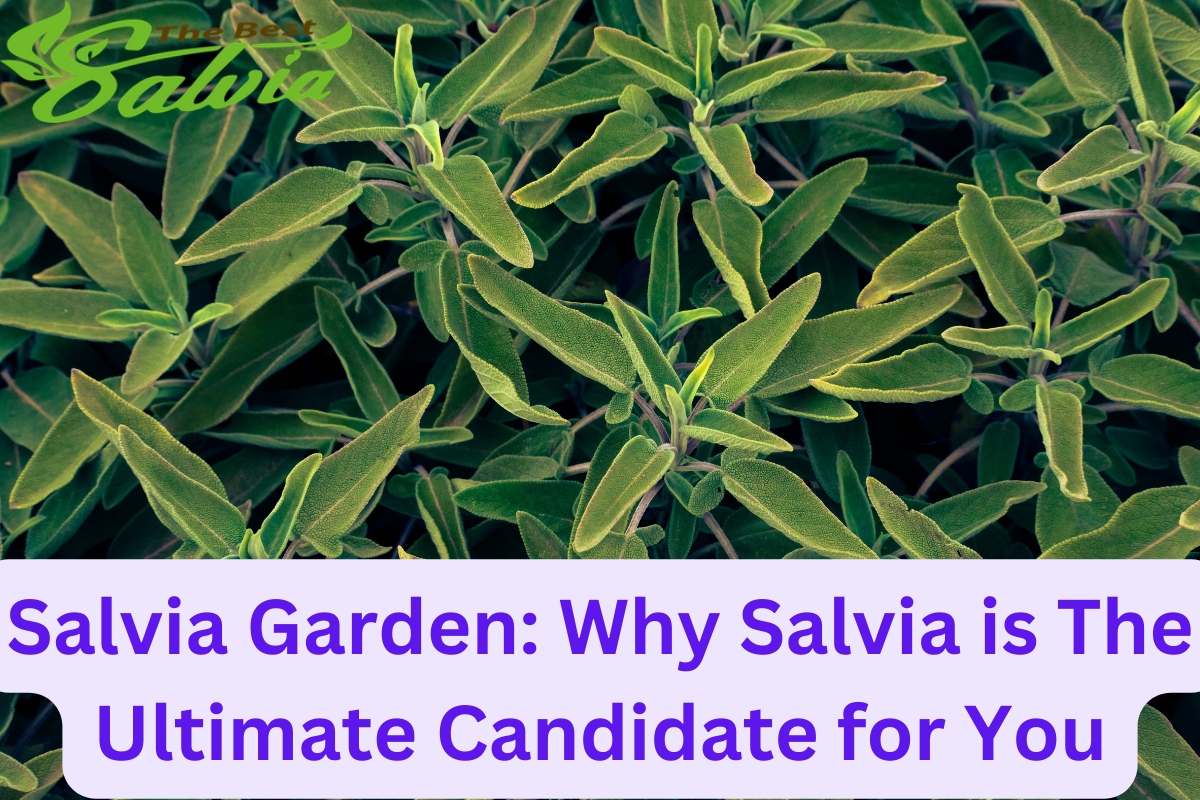Salvias and other ages have existed for millennia, but until recently, the immense benefits of the herb were discovered. Many people who use Salvias for various purposes have never toyed with the idea of cultivating their salvia in their backyard. That is mainly because little information about the salvia garden exists out there. Additionally, the legality of salvia varies from one country to another. It isn’t easy to do it perfectly if you constantly look over your shoulder. This article will share some tips on cultivating salvia in your garden.
RELATED ARTICLE:: How can Salvia Divinorum help treat Depression
Why Salvia Garden?
Several reasons make salvia the perfect crop to put in your garden.
- Size – Salvia is just the right size, not too big nor too small. Different salvia types come in different sizes so that you can choose the most appropriate garden. Some salvias can grow to 24 inches, while others can be as small as 12 inches.
- Blossom Colour – Salvia’s blossoms in different colors will make your garden beautiful. Most salvias blossom in blue, red, and white. However, you can also find them in lavender. You will find one of these colors gorgeous.
- Season – the timing for salvia blossoming is just perfect. The plant’s blossom season is from late spring to early summer, which is the period when most people enjoy time outdoors after a chilly season.
- General Appearance – With its velvety leaves and densely packed flowers, salvia easily captures the eye in the garden. Additionally, the plant’s square stems and tubular blossoms
Ideal Conditions
Like every other crop, Salvia has ideal conditions under which it can do well. Most salvias need sunny conditions to perform well. The soil should also be well-drained to reduce the water available for the plant. Salvias don’t do well in winter because the ground is cold and wet.
READ MORE:: Best places to buy salvia online
The cold season also prolongs the plant’s flowering, and you will likely lose some plants. Therefore, it is advisable to cut them considerably in spring and winter. Alternatively, you can plant your favorite salvias in containers during winter. These vessels, such as pots, will shield it from the extreme cold.
Must Read:: How to Use Marijuana and Salvia Divinorum for Depression and Anxiety During the Lockdown
It would help if you grew tender varieties of the herb in vessels, even in the summer. For instance, salvias are delicate and easily break if trampled on. Additionally, these incredible plants are sensitive to too much sunlight and hot conditions. The vessel protects it from such extreme hot conditions. Lastly, salvias thrive in rocky ground with poor soil. That means it will do very well in arid and semi-arid areas.
Planting Techniques
As mentioned earlier, one can grow salvias during the sunny season, from late spring to summer. It would be best if you were cautious about some things before planting salvias, as follows:
- Identify a section of your salvia garden where the sun shines the most. The spot should have minimal TLC, so you should not worry about that because the plant is self-sufficient.
- Trim your plant before planting to ensure a bushy and sturdy growth. Remember to do this tenderly to avoid damaging the stem.
- Dig the ground to about 14 inches
- Put a layer of compost approximately 4 inches deep, mixed with the loosened soil. The manure will provide nutrients to the young plant.
- To improve drainage, add grit to the soil and mix evenly.
- If you’re using a container like a pot, dig a hole the size of the container and do as #5 above.
- Plant the plants about two meters apart to avoid congestion.
Caring for The Plant
Salvias need proper care to get the most out of it. Here is how to care for it once you’re done with the planting:
- Remove faded and loosened flowers once the plant has grown to ensure more blooming.
- Feed the plant but not frequently, as salvias don’t need a lot of feeding during the season.
- Cut the salvia’s stem two inches above the soil after the first killing frost.
- Remove dead flower heads to ensure the plant blooms throughout the season. However, it would help if you did the deadhead periodically.
- Prune any stems, mainly on the lower part of the aging plants.
- To encourage reseeding, don’t remove the flowers at the end of the season. Leaving the flowers on will also ensure birds and other insects have something to eat.
- Before replanting, ensure to separate the old plants into clumps. Additionally, add compost to the soil and mulch again.
Related Article:: Desirable Magic Mushroom Recipes
Taking Salvia Garden Cuttings
Taking salvia cuttings is a caring technique that ensures your plant remains healthy throughout the season. Most salvias should undergo cutting to remove non-flowering stems regularly. Notably, the cutting should take place in April and September. The whole point of cutting ensures you have many new plants as the old ones to replant and sell.
Cut down the lower leaves just below the node. That should be done to plants that are about 10 cm long. All cuttings should be inserted into a compost that has been watered. Wrap a plastic bag on the vessel without covering the foliage and gently place it on the chosen sport.
Pot all cuttings after about two weeks, ensuring enough drainage by adding sand to the soil or making holes in the vessel. Look out for salvias that propagate themselves and use the seedlings to plant more plants.
Overall
There are nearly 1000 species of salvias that grow all year round. You will find one that looks good for your salvia garden and follows the steps above to expand. However, you need to know that salvias grown on the free ground require extra care compared to pots. For instance, you don’t need to feed salvias in the environment because you might get more foliage than flowers. But it would help if you watered salvias in pots regularly because it doesn’t get as much rain as in the ground. We have fresh, dried salvia in our shop you can use for your mindfulness. Please feel free to explore.

